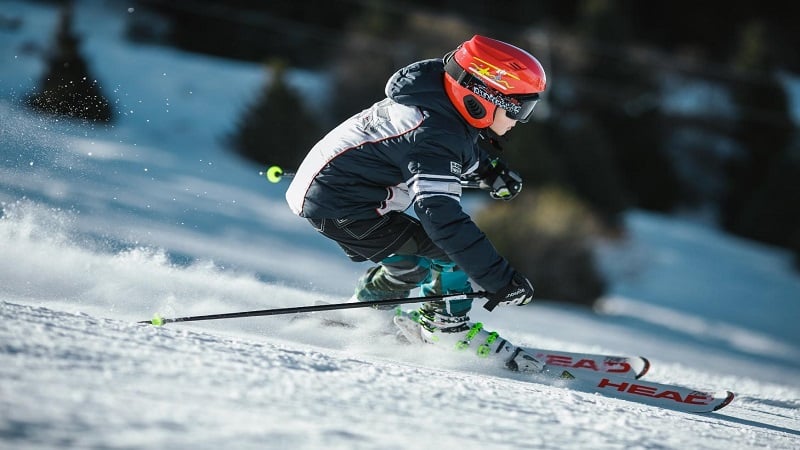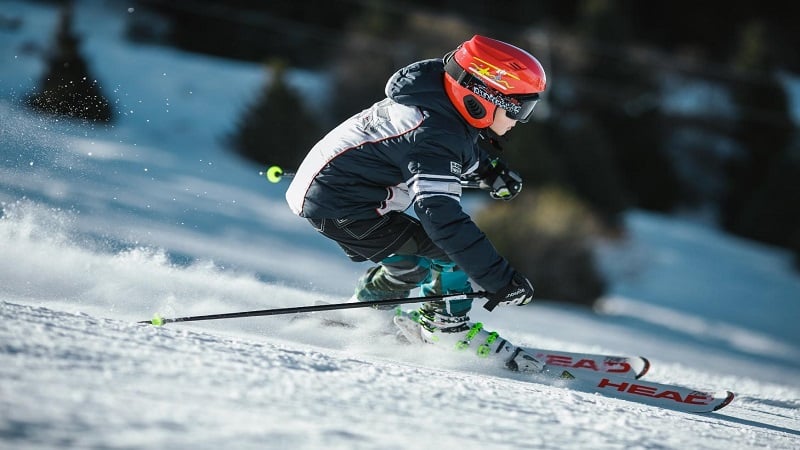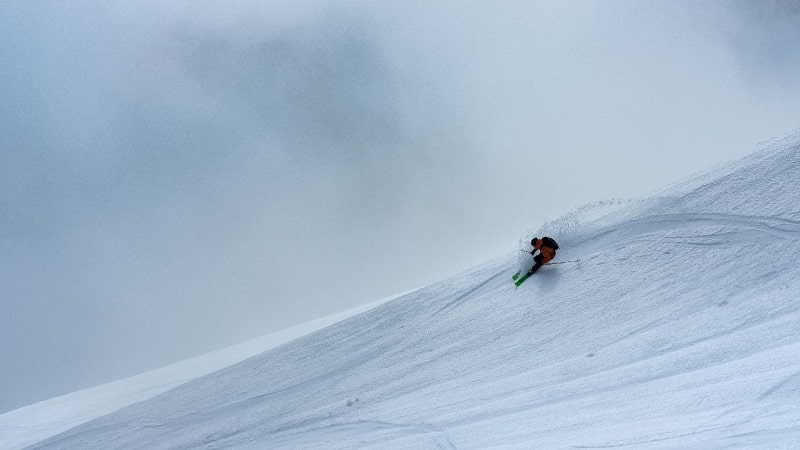Those new to the world of skiing often complain of one common problem: the sheer volume of ski terminology that their more experienced counterparts throw around. Sounds familiar, doesn’t it? Perhaps you had assumed all skiing is downhill skiing – which, technically, it is. But then, a colleague pitched the idea of cross-country skiing and you were left scratching your head.

With seemingly three different names for the many different disciplines of skiing, it is very easy to get confused. Add to that the fact that every different type of skiing carries its own terms, rules, and methods, and the confusion only grows hereon.
As is the case with every other niche activity, there is a great deal to learn about a great of things, when it comes to skiing. And any devoted skier has to start somewhere. To kick things off for you, we’ve compiled this guide on two of the most popular types of skiing techniques: the half pipe and superpipe. We’re going to list down some common facts about halfpipe and superpipe skiing, what sets them apart from other skiing disciplines and what the major hallmarks of each are. Read on to find out more and see which of the two is better suited to your skiing abilities.
What are Halfpipe and Superpipe?
Let us begin with the basics. What are halfpipe and superpipe in skiing?
Though is one of the most hotly anticipated events at every Winter Olympics, we find that not many know much about it. Perhaps this is because this is a relatively new discipline? One that is short, easy and but surprisingly enthralling.
Simply put, a halfpipe is merely just a U-shaped ramp or course that has been built specifically for sports. You may have had the pleasure of coming across skateboarders or BMX bike riders doing stunts on such a ramp. A halfpipe is essentially the same, used by snowboarders and skiers to propel themselves into the air. Once levitated, they are able to pull tricks or poses before landing continuing on to the other side of the ramp to repeat the process.
A superpipe, on the other hand, is but a progression of this. While the concept remains the same, a superpipe is a halfpipe constructed with snow. Its walls are 22 feet (6.7 meters) high, as per the measurements deemed appropriate by the Winter Olympics committee and the FIS Snowboarding World Cup. The minimum required width has been adjudged at 64 feet.
If you decide to tune into the upcoming 2022 Winter Olympics – scheduled to be held in Beijing, China, from February 4 to February 20 – you will notice that superpipes are rather common in all major skiing events. Also, usually, the same halfpipe is used for both snowboarding and skiing at the Olympic games.
Needless to say, halfpipes and superpipes are real crowd-pleasers. Whether you watching halfpipe and superpipe tournaments on television or are lucky enough to be present at the event, you are sure to find yourself gasping as each skier drops into the pipe, one by one, and completes a run down its length, ringing in as many jumps, stunts and poses as they can. Of course, whosoever comes out of the pipe with the highest score gets the gold. Points are distributed by a panel of judges – usually veteran halfpipe athletes themselves – based on each individual competitor’s style, skill, and level of difficulty.
How did they come about?
It may surprise you to know that the first halfpipe actually came from California, in the early 1970s. It was built by a skater named Tom Stewart, who wanted to replicate the experience of skiing on water pipes in the central Arizona desert in a more accessible location. Tom thereby brought his idea up with architect brother Mike and the rest, as they say, is history.
As far as the incorporation of halfpipes and superpipes in skiing goes, this came about sometimes during the mid-1980s, when ski resorts across America began building them on the premises so as to attract greater clientele. It must be mentioned though that back in the day, the ramps were used primarily by snowboarders and tended to be rather rough to ride on. Not to mention, maintenance was difficult and time-consuming.
But thanks to a farmer by the name of Doug Waugh, that changed soon enough. In the early 1990s, Waugh managed to invent the Pipe Dragon, a halfpipe grooming machine that would ultimately become the future of halfpipes on snow. The device used leftover farming equipment to cut big pipes out large mounds of snow and was quickly adopted by winter sports committees and ski resorts. The Pipe Dragon went on to be used at the 1998 and 2002 Winter Olympics.
Even so, halfpipe and superpipe skiing did not get to make their Olympic debut up until the 2014 Winter Olympics, held in the city of Sochi in Russia.
Rules of Halfpipe and Superpipe Skiing
Halfpipe skiing events at the Winter Olympics follow a very simple format. Each skier drops into the pipe, tries to do present the best run that they can, with flips, twists and summersaults, and come out onto the other side. Once their run is complete, the panel of six judges allocates a score from 1 to 100, taking into account factors such as the range of tricks, the skills involved in executing them and the amplitude and height achieved by each contestant while skiing. They also give points based on the level of difficulty of the run and its progress, if any.
Other than this, every participating skier is allowed to have two qualifying runs. Only 12 skiers with the highest scores make it through to the final round. As a finalist, one has the chance to complete three runs and whoever delivers the best one at the end wins.
Mind you, this is a rule that was introduced by the Winter Olympics only recently. Prior to this, finalists were only allowed two runs. Usually, contestants put on a simple, relatively easier, show in the first go. Perhaps they do so to give themselves a solid boost on the scorecard. In the next two runs, however, expect to see some jaw-dropping, extreme skiing stunts that are sure to elicit ‘oohs’ and ‘aahs’ from the crowd. As with all other Olympic games, the top three skiers get to take the gold, silver and bronze medals home.
Halfpipe/Superpipe Champions from 2018 Winter Olympics
Any guide on Olympic halfpipe and superpipe skiing would be incomplete sans the mentions of the stalwarts of the popular winter sport. Some of the skiers who won big in Sochi are:
Men’s Halfpipe
Shaun White: the 35-year-old American snowboarding and skiing icon scored a perfect 100 in the qualification rounds back in 2018, and will soon be returning to the pipes in Beijing next year. This will mark White’s fourth time competing at the Olympic Games.
Ayumo Hirano: White ought to look out for the much younger and so, much more agile Japanese skier. The 19-year-old Hirano won the silver medal for his country in Sochi and has been working hard to up his halfpipe game ever since. Needless to say, it will be one tough competition!
Women’s Halfpipe
Chloe Kim: Another American skiing champion, Kim was born on April 23, 2000. Unfortunately, at just 14, she was much too young to compete in Sochi but now that she is 17, fans are looking forward to what Kim has up her sleeves. The youngster has already won the women’s Superpipe event in 2015, 2016 and 2018 at the Aspen X Games. And what’s more, she also has two gold medals in halfpipe and slopestyle skiing from the 2016 Lillehammer Winter Youth Olympic Games under her belt.
Also paving the way for other female halfpipe skiers around the world are Canadian Cassie Sharpe, Frenchwoman Marie Martinod and America’s Maddie Bowman and Brita Sigourney, amongst others.
10 best halfpipe and superpipe Locations in the US
Skiing and snowboarding are amongst the fastest growing winter sports of all time, with the number of beginners, professionals and leisure skiers increasing by the thousand every year. Americans looking to give the pipes a shot have the luxury of choosing from some of the best halfpipe and superpipe skiing spots in the world. From California to Maine and back, there are plenty of ski and snowboarding resorts that offer runs for a variety of skill sets, with the background of astounding mountain ranges, lakes and forests to boot.
If you are planning a winter vacation soon and want to try your hand at halfpipes or skiing/snowboarding in general, why not check out some of the best ski resorts in the US? These include:
- Mammoth Mountain in California
- Vail in Colorado
- Mount Bachelor in Oregon
- Squaw Valley and Alpine Meadows in California
- Whiteface Mountain in New York
- Stratton in Vermont
- Telluride Ski Resort in Colorado
- Park City Mountain Resort in Utah
- Big Sky Resort in Montana
- Mount Hood Meadows in Oregon
Also not too far out lies the Blackcomb Mountain in Whistler, Canada – arguably the world’s most famous superpipe. True to its name, the pipe is over 450 feet long, with a 17-foot radius and walls that are 16.5 feet high! In fact, it was here that White first won the superpipe event at the Global X Games in 2003.
A few words of warning though: Blackcomb Mountain, given the superpipe’s size and steep terrain, is meant only for talented and experienced riders. It is advisable to get in ample experience and hone your pipe skills before heading up north as White did.
Which location suits you best depends on your level of expertise and the type of skier you are. Freeriders are more likely to be interested in the fresh powder snow common to the backcountry in the west. Freestylers, on the other hand, prefer parks with varying terrain that allow them to practice rails, jumps, jibs and other stunts to their heart’s content. Carvers seek fast, well-maintained lands.
Our Final Thoughts
These are just some of the factors one must take into consideration when selecting where to go for skiing or snowboarding. But if actively indulging in the sport is not your thing, it is okay to watch halfpipes and superpipes run on television instead. Especially with the 2022 Beijing Winter Olympics right around the corner, you will have the chance to be beguiled by this creative and edge-of-your-seat kind of winter sport soon enough.











